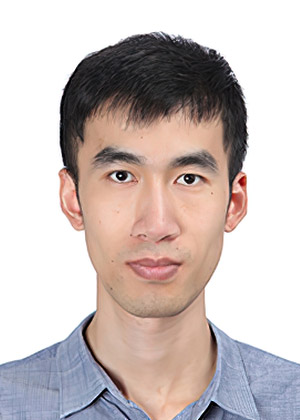
Mathematics & physics

Wei Wei
Wei Wei was born in May, 1983 in Wuhan, Hubei Province. He is currently a professor of the Institute of High Energy Physics, Chinese Academy of sciences (IHEP, CAS). He received his Bachelor degree from the University of Science and Technology of China in 2005, and PhD. from IHEP, CAS in 2010. Since then he worked as a scientific staff and promoted to professor in 2018. He was supported by the National Talent Program – Young Top Talent, selected as the Outstanding Member of the Youth Innovation Promotion Association of CAS, and awarded the Youth Prize of the Chinese Nuclear Society. He is currently a member of the Academic Committee of IHEP, and the group leader of the Electronics Group of the Experimental Physics Division of IHEP. He is also served as one of the vice director members of the Special Committee on Micro-electronics of the Branch Society of the Nuclear Electronics and Detection of the Chinese Nuclear Society, a member of the Youth Federation of the Shijingshan District of Beijing, and a member of the Electronics Discipline Editorial Board of the Journal of Radiation Detection Technology and Methods.
His research has been focused on Nuclear Electronics and Application Specific Integrated Circuit (ASIC) design, and made long efforts in the field of X-ray pixel detectors. He is now participating in the collaborations of large-scale scientific facilities including the High Energy Photon Source (HEPS), R&D of the Circular Electron Positron Collier (CEPC), Jiangmen Underground Neutrino Observatory (JUNO), and so on, and leading the self-design work of frontend ASICs for detectors of those projects. He also visited multiple foreign laboratories in France, USA and Germany for international collaborations including ATLAS, nEXO and JUNO.
Development of the X-ray Pixel Detector
Advanced light sources, represented by synchrotron radiation facilities, are important platforms for multi-discipline researches. They are the strategic directions from the national demands, while several large-scale scientific facilities are under construction or being scheduled, including the High Energy Photon Source (HEPS), Shanghai high repetition rate XFEL and extreme light facility (SHINE), Hefei Light Source and so on, However, detector technologies of the light source beamlines became the bottleneck problem for a long time. Among them, X-ray pixel detector is a typical representative. Unfortunately, systematic studies were fully blank in this field in China before, and products were totally foreign-monopolized. To break through the dilemma, Wei Wei made pioneer studies in the X-ray pixel detector field in China, led the team and achieved two stages of key results through long-term research: 1. realized the breakthrough and filled in the blanks in the field of high-end detectors for synchrotron radiation: brought out the first domestic silicon pixel detector prototype machine, while the performance of the full system reached the level of advanced international products; the sub-project successfully passed the national acceptance inspection of HEPS-TF (High Energy Photon Source – Test Facility); the detector has been delivered for customer applications, while customers’ achievements have already began to emerge. During the development work, key techniques of pixel detectors have been broke through, especially the techniques of pixel IC chips, sensors, advanced packaging. At the meanwhile, key technology localization has also been achieved and various innovations have been made. This proved the work generally solved the problem of “being strangled” in the field of pixel detectors. 2. he led the team and aimed at the international frontier: led the development of the fine pitch pixel detector. Its spatial resolution reached the same level of the state-of-the-art research of the world, and filled in the blanks of domestic field; he for the first time proposed internationally a novel 4-D detection mode and implemented it in the field of synchrotron radiation; A series of prototype chips were successfully developed for large-scale scientific facilities including vertex detectors for particle physics experiments, Free-Electron Lasers, and so on. The work preliminarily realized “paralleling” with international studies while promoted from “pursuing”. The breakthrough of those key technologies can make beamlines in future light sources capable to realize customized detector design, thus be freed from the restrictions of foreign products and can save a large amount of national funds. Moreover, it also makes it possible to promote the beamline capabilities, or even explore brand new experiment methodologies to realize original innovations.